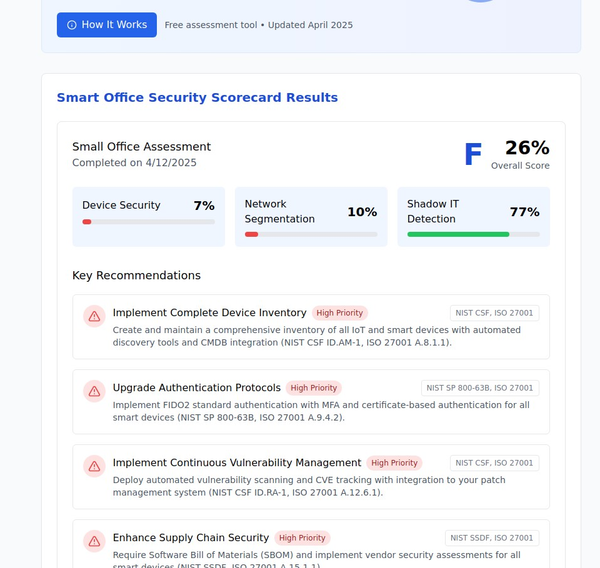Tailoring Military Cadence in Cybersecurity: Industry-Specific Approaches

While adopting a military cadence in cybersecurity operations can benefit organizations across the board, the implementation of this approach should be tailored to the specific needs and challenges of different industries. This article explores how various sectors can adapt military-style cybersecurity practices to their unique environments.

1. Financial Services
Key Challenges: High-value targets, strict regulatory requirements, need for constant availability.
Tailored Approach:
- Implement a 24/7 Security Operations Center (SOC) with rotating shifts, mirroring military watch schedules.
- Conduct frequent, scenario-based drills focusing on financial fraud, data breaches, and insider threats.
- Establish a "cyber war room" for rapid response to critical incidents.
- Incorporate threat intelligence specific to financial sector attacks into daily briefings.
Benefits: Enhanced ability to detect and respond to sophisticated financial crimes, improved compliance with regulations like GDPR, PCI-DSS, and SOX.
2. Healthcare
Key Challenges: Protection of sensitive patient data, ensuring availability of critical systems, diverse and often outdated technology infrastructure.
Tailored Approach:
- Develop specialized teams focused on protecting electronic health records (EHR) systems.
- Implement strict access control protocols, similar to military clearance levels.
- Conduct regular drills simulating ransomware attacks on hospital systems.
- Establish clear protocols for maintaining patient care during cyber incidents.
Benefits: Improved protection of patient data, enhanced ability to maintain critical services during cyber attacks, better compliance with HIPAA and other healthcare regulations.

3. Energy and Utilities
Key Challenges: Protection of critical infrastructure, operational technology (OT) security, geographically dispersed assets.
Tailored Approach:
- Establish a hierarchical incident response structure similar to the Incident Command System used in emergency management.
- Conduct large-scale drills simulating cyber attacks on power grids or water treatment facilities.
- Implement a tiered alert system for different levels of cyber threats to infrastructure.
- Develop specialized teams for IT and OT security, with cross-training exercises.
Benefits: Enhanced protection of critical infrastructure, improved coordination between IT and OT security teams, better preparedness for large-scale cyber incidents.
4. Retail and E-commerce
Key Challenges: Large attack surface due to numerous customer touchpoints, seasonal fluctuations in traffic and threats, protection of customer data and payment information.
Tailored Approach:
- Implement a scalable SOC that can rapidly expand during high-traffic periods (e.g., holiday shopping seasons).
- Conduct regular drills focused on e-commerce platforms and point-of-sale systems.
- Establish clear protocols for balancing security with customer experience.
- Develop specialized teams for fraud detection and prevention.
Benefits: Improved ability to handle seasonal security challenges, enhanced protection of customer data, better detection and prevention of fraud.
5. Manufacturing
Key Challenges: Protecting intellectual property, securing supply chains, integrating security in Internet of Things (IoT) and Industrial Control Systems (ICS).
Tailored Approach:
- Establish specialized teams for IT security, OT security, and supply chain security.
- Conduct drills simulating attacks on manufacturing processes and supply chain disruptions.
- Implement strict access controls and segmentation for different areas of operations.
- Develop protocols for secure integration of new IoT devices and ICS components.
Benefits: Enhanced protection of intellectual property and critical manufacturing processes, improved security across the supply chain, better integration of security in Industry 4.0 initiatives.
6. Government and Defense
Key Challenges: Protection of classified information, defense against nation-state actors, securing a vast and diverse IT infrastructure.
Tailored Approach:
- Implement a strict hierarchical structure with clearly defined roles and responsibilities.
- Conduct large-scale, interagency cyber warfare exercises.
- Establish a comprehensive insider threat program.
- Develop specialized teams for counterintelligence and cyber warfare.
Benefits: Enhanced ability to defend against sophisticated nation-state attacks, improved interagency coordination, better protection of classified information.
7. Education
Key Challenges: Balancing open access with security, protecting student data, securing a diverse and decentralized IT environment.
Tailored Approach:
- Establish a centralized security operations team with liaisons in different departments.
- Conduct regular phishing and social engineering awareness training for staff and students.
- Implement a tiered access system for different types of data and resources.
- Develop protocols for rapid response to threats targeting student data or research information.
Benefits: Improved protection of student data and research information, enhanced ability to detect and respond to threats in a diverse IT environment.

Conclusion
Adopting a military cadence in cybersecurity operations can significantly enhance an organization's security posture, but the approach must be tailored to the specific needs and challenges of each industry. By understanding the unique threats and operational contexts of different sectors, CISOs can adapt military-style practices to create robust, effective, and contextually appropriate cybersecurity strategies.
The key to success lies in balancing the structure and discipline of military approaches with the flexibility and innovation required in various industries. Regular assessment and adaptation of these strategies will ensure that organizations stay ahead of evolving cyber threats while meeting their specific operational needs.
As cyber threats continue to grow in sophistication and impact, industry-specific adaptations of military cybersecurity practices will play an increasingly crucial role in protecting organizations across all sectors.






